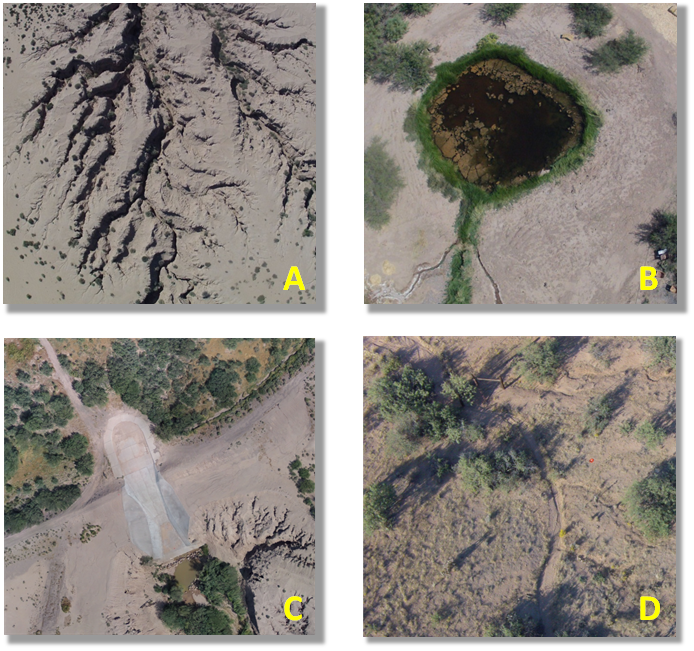In October 2012, the BLM National Operations Center, BLM Safford Field Office, the University of Arizona, and the Gila Watershed Partnership collaborated to explore the use of unmanned aerial systems (UAS) to monitor watershed erosion control structures, vegetation condition, and recreation site boundary fencing within the San Simon Valley watershed in Arizona. The RQ-11a Raven was flown to collect images using high-resolution imaging cameras and high-definition video technology. By using a UAS to capture images from the air, land management specialists can efficiently identify and monitor earth surface conditions and processes, especially in remote areas. A total of 6 flight days captured more than 29,000 images for various applications, including rangeland health, infrastructure mapping, engineering site design, erosion head cutting, recreation site management, fence surveys, vegetation treatment effectiveness, and streambank modification measurements.
Aerial images captured using a GoPro HERO 2 camera carried aboard a UAS. A) This image shows the extent of erosion channels in highly erodible soil in the San Simon Valley, Arizona. Digital elevation models derived from stereo imagery can be used to monitor the changing erosion patterns over time. B) This high-resolution aerial imagery provides enough detail to identify vegetation species, and monitor vegetation treatment and streambank modification at Sands Draw in the San Simon Valley watershed. C) Digital stereo imagery of this detention structure allows assessment of its overall structural integrity. D) Range exclosure monitoring was conducted with the goal of assessing range conditions inside and outside the exclosure fence. In the above imagery, an orange paint can lid was used as a simple ground control target for georeferencing the imagery.


